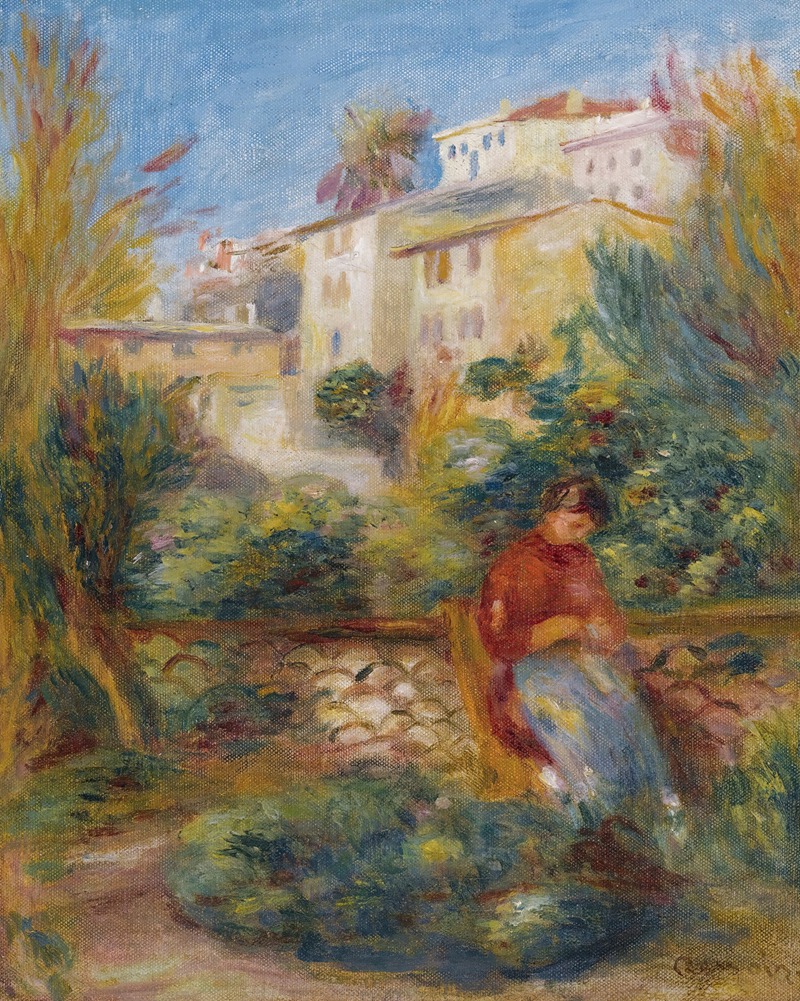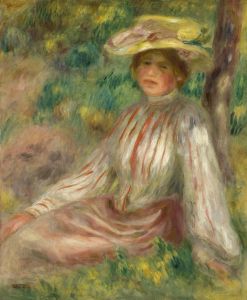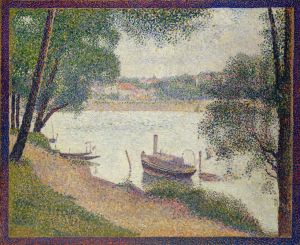
La Terrasse À Cagnes
A hand-painted replica of Pierre-Auguste Renoir’s masterpiece La Terrasse À Cagnes, meticulously crafted by professional artists to capture the true essence of the original. Each piece is created with museum-quality canvas and rare mineral pigments, carefully painted by experienced artists with delicate brushstrokes and rich, layered colors to perfectly recreate the texture of the original artwork. Unlike machine-printed reproductions, this hand-painted version brings the painting to life, infused with the artist’s emotions and skill in every stroke. Whether for personal collection or home decoration, it instantly elevates the artistic atmosphere of any space.
Pierre-Auguste Renoir's "La Terrasse à Cagnes" is a notable work by the celebrated French Impressionist painter, renowned for his vibrant light and saturated color. Renoir, born in 1841, was a leading figure in the Impressionist movement, which sought to capture the fleeting effects of light and atmosphere in everyday scenes. His work is characterized by a focus on beauty and sensuality, often depicting lively social scenes and intimate domestic settings.
"La Terrasse à Cagnes" was painted during the later years of Renoir's life, a period when he spent considerable time in the south of France, particularly in Cagnes-sur-Mer. This region, with its warm climate and picturesque landscapes, provided Renoir with abundant inspiration. The painting reflects Renoir's fascination with the Mediterranean light and the lush, vibrant environment of the area.
The artwork depicts a terrace scene, likely at Renoir's estate, Les Collettes, in Cagnes-sur-Mer. This estate became Renoir's home in 1907 and remained so until his death in 1919. The terrace setting is a recurring theme in Renoir's work from this period, showcasing his interest in capturing the interplay of light and shadow on natural forms. The composition typically includes elements such as trees, flowers, and the expansive sky, all rendered in Renoir's signature loose brushwork and vivid palette.
Renoir's technique in "La Terrasse à Cagnes" exemplifies his mature style, where he moved away from the more detailed brushwork of his earlier years to a softer, more fluid application of paint. This approach allowed him to convey the shimmering effects of sunlight and the gentle movement of foliage. The painting's colors are rich and varied, with a harmonious blend of greens, blues, and earth tones that evoke the serene and idyllic atmosphere of the Mediterranean landscape.
During this period, Renoir was also grappling with the effects of rheumatoid arthritis, which significantly impacted his ability to paint. Despite this, he continued to produce a substantial body of work, often adapting his technique to accommodate his physical limitations. His determination to continue painting, even in the face of adversity, is a testament to his passion for art and his dedication to capturing the beauty of the world around him.
"La Terrasse à Cagnes" is a reflection of Renoir's enduring love for nature and his ability to find beauty in everyday scenes. The painting is celebrated for its ability to transport viewers to a tranquil, sun-drenched terrace, inviting them to share in the peacefulness and joy that Renoir found in his surroundings. Today, Renoir's works, including "La Terrasse à Cagnes," are held in high esteem and can be found in major art collections and museums around the world, where they continue to be appreciated for their contribution to the Impressionist movement and their timeless appeal.


















